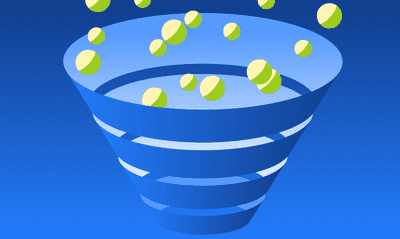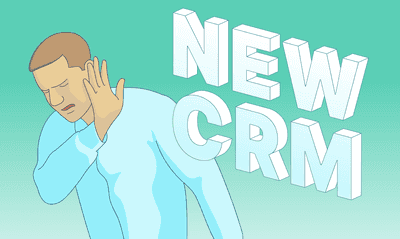What Is Lead Generation and How to Generate More Leads for Your Business
In this article, we will first define lead generation, explore how you can generate more leads for your business, and finally teach you how to qualify your leads to give yourself the best chance at turning them from leads into customers.
10 min read

Eric Hansen
Feb 24, 2021

Acquiring leads is one of the most important aspects of any company; it is vital to its growth and success, with businesses dedicating a lot of time, money, and resources into lead generation. However, regardless of how much your energy, time, and money you put into generating leads, if you are targeting prospects who are generally not interested or ready to buy your product or service, it will make it almost impossible for you to convert them from leads to customers.
What Is A Lead?
A lead is a piece of information that a business uses to identify a potential customer that is interested in their product or solution.
A common mistake that businesses make is classifying everyone as a potential lead; a lead is a person who has a specific interest in your business’s product or service. For a B2B company, this will be company leaders or employees with decision-making authority, and for a B2C company, your leads are consumers.
There are typically two sources of leads, inbound leads and outbound leads. Inbound leads are generated through visitors who have shown an interest in your product or service by actively providing their contact details. Outbound lead generation is through potential customers who have not actively contacted your company but have been qualified by your sales team as someone who may have an interest in your product.
When you are qualifying your leads, it is important to recognize that not all leads are the same. There are a number of ways that they can be categorized, depending on the quality and what life cycle stage they are in, with the best way to differentiate between them being Marketing Qualified Leads and Sales Qualified Leads.
Marketing Qualified Lead (MQL)
Marketing qualified leads are visitors who have engaged with your marketing strategies; however, they are not the kind of lead you would pass onto the sales team to contact. This may be that they are engaged with your social media, your content such as blogs, newsletter, or have shown an organic interest in your company.
Sales Qualified Lead (SQL)
A Sales Qualified Lead is a visitor who has shown an active interest in becoming a customer. This may be someone who has filled out a form requesting more information on the product or service, have requested a demo, or have signed up for a trial.
Once you have identified a lead, the next step is to nurture the lead through a process that is often referred to as a sales funnel. The sales funnel helps to educate your prospective lead about your product, service, and value proposition, helping to convert them from a lead to a customer. However, before you can begin the nurturing process, you need to have first generated the lead.
What Is Lead Generation
Lead Generation refers to the process of collecting information from potential future customers.
The lead generation process is where a potential lead has been first attracted to marketing material or advertisement distributed by the company—often resulting in the lead submitting their personal information to the company to obtain additional marketing material or find out more about the product’s service.
The reason that lead generation is so important is that when a potential lead is organically attracted to your product or service, the transition for them to become a paying customer is more natural and less invasive. When approaching lead generation, you should always try to target leads that have demonstrated similar interests to what the company has to offer; these kinds of customers are known as high-quality leads. Qualifying, targeting, and attracting high-quality leads will give you a higher success rate of converting them from leads to customers.
Along with generating customers, which is vital to the success of any business, lead generation can provide other key benefits, such as:
Brand Awareness: While publishing content on social media, blogs, and newsletter are a common way to generate leads, it also is key in building your brand. Through the tone that you use, the topics you discuss, and the images you share, you are able to define your brand identity, which influences how people perceive your company.
Data Collection: With lead generation comes data collection. This data can help you to nurture your leads as well as to adapt your strategy. The information you gather from each medium will help you relate to your lead through the nurturing process to give you the best chance of turning them into a customer. As you may have several different lead generation methods, the data collected will help you adapt your strategy to focus on your customers’ needs, wants, and pain points.
Lead Generation Process
To effectively generate high-quality leads, you will need to work on fine-tuning your lead generation strategy. However, the first step is to understand the process and how to generate leads in sales.
- First, in the lead generation process, is the initial interaction; this is how the visitor first discovers your business- this will often be through one of your marketing channels or online platforms, such as social media, blog, or website.
- Next is the call to action (CTA); this is how you hook your visitor and encourage them to take the next step, facilitating the communication.
- The CTA will take your visitor to either your business’s landing page or form where they are required to enter their personal information in exchange for an offer of value; this may be an e-book, discount, or a free trial.
Once you have captured the visitors’ information, they have officially become a lead, and you can move onto the next process, which is nurturing, as you work on converting the lead to a customer.
How To Generate Leads
Generating leads is a complicated process that requires a diverse range of methods and strategies to be effective. With the introduction of software, social media, and other marketing tools, businesses can utilize a combination of these methods to reach out to a wider range of potential leads; this is known as running a lead generation campaign. However, with so many different strategies and techniques to attract potential leads, to be successful, it is essential that you spend the time and resources finding out what works best for your company.
Online lead generation strategies differ from industry to industry; with what might work for a retail business where they offer a product, not work for a software company, where they offer a service. We will explore some of the most common forms of lead generation strategies so that you can qualify what might work best for your business.
Landing Page
Having an engaging website and landing page with data capture forms is essential for all businesses who want to generate leads in today’s market. Your website is directly linked to your product, so if it seems to lack functionality and be a bit dull, the visitor will probably think your product will do the same. Ensuring that it is also optimized for mobile is incredibly important for businesses that are targeting younger generations.
Social Media Marketing
Social media platforms are a great tool to show off your product or service, engage customers, and build your brand. From Instagram stories to Facebook ads to TikTok Reels, you can create quality content with calls to action that link your customers straight to your product or service.
Content Marketing
Content is one of the best ways to get potential leads to attention. There are a number of ways you can create content, such as blogging, videos, and e-books. By creating engaging or educational content, the visitor is more likely to react to the call to action and provide their contact information so that they are aware of when future content is released.
Email Marketing
The most common form of email marketing is a newsletter. While those who have signed up to a newsletter may be easier to convert to customers’, as they have already shown an interest in your brand, product, or service, emails can often feel cluttered. When sending out a newsletter, it is important to create personalized, eye-catching, and engaging content that either provides an offer or a call to action that they can’t refuse.
Targeted Ads
Paid advertising is one of the best ways to target your ideal customer. Using a catchy phrase or slogan demonstrating a pain point or value proposition, you can hook your lead and direct them straight to the service or product you are offering. There are a number of mediums that you can use for targeted ads, with the most common being Google, Facebook, and LinkedIn.
Trials
Customers often like to try before they buy, making trials a great way to entice a customer into a sale. Once they are already using the product, they are often easier to convert into paying customers; as you have already captured their attention, they are more likely to respond to offers and communication.
Build a Community
Building a community is a great way to develop long-lasting, loyal clientele and boost your brand as a leader in the field. Through your community, you can connect with your audience in various ways by sharing content, product updates, organizing events, and even using them to get feedback. There are a number of platforms you can create a community on, such as Facebook, Reddit, Slack, or Linkedin; which one you choose depends on your target audience.
How to Qualify a Lead
Once you have generated a lead, you need to qualify the lead and determine if they are likely to convert from being a lead into a customer. A common misconception that is often made when a business is qualifying their leads is that you contact anyone and everyone who has responded to one of your marketing mediums. However, when it comes to qualifying the leads, it is more beneficial to seek quality over quantity.
While in the lead generation process, accessing a large market is important, acquiring a large quantity of leads does not guarantee that you will make more sales. The most important part of sales lead generation is qualifying whether your leads are of high quality and are interested in transitioning from leads to customers. A good quality lead is a prospect interested in your product or service and in the market to make a purchase. Qualifying who is genuinely willing to make a purchase or sign up for your product will save you time, money, and a lot of resources; this can be done by first identifying your customer and then using the lead generation funnel to gather specific information to qualify them.
Identifying your ideal customer and setting a clear definition of who they are will help you and your team to distinguish the difference between interest and intent. Here are the key features to look out for:
- Budget: Knowing the budget of the customer and if that is compatible with your solution.
- Who Calls The Shots: Is your lead the decision-maker; if not, are they going to introduce you to them.
- Problem: What are the pain points that the customer is suffering, how do your business and solution solve this.
- Timing: What stage is the lead at, how urgently do they need your business and solution.
Lead generation utilizes various strategies to draw in potential customers by offering them useful information as you build and nurture relationships with potential customers. It is a valuable tool in helping your sales team evaluate high-quality leads to have the best chance at converting leads to paying customers. Effective lead generation is vital to the growth and success of any business; it will play a key role in the productivity of your sales processes, helping to contribute to overall better outcomes for your sales team and your business.


